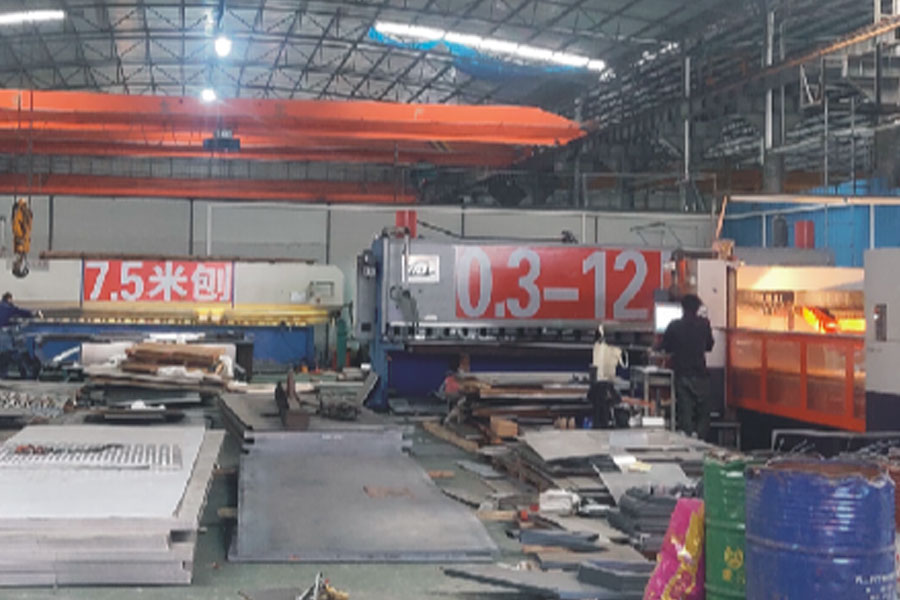Zinc alloy die-casting parts are widely used in various decorative aspects, such as furniture accessories, architectural decoration, bathroom accessories, lighting parts, toys, tie clips, belt buckles, various metal buckles, etc., which also requires the casting surface The quality should be high, and it must have good surface treatment properties. The most common defect of zinc alloy die castings is blistering on the surface.
Defect characterization: Protruding vesicles on the surface of die-casting parts. Mainly manifested in: found out after die casting, it will be revealed after polishing or processing, and it will appear after oil spraying or electroplating.
cause:
1. Caused by pores: mainly stomata and contraction mechanism, stomata are often round, and most of the contractions are irregular.
(1) Causes of air holes: a During the filling and solidification of the molten metal, due to the gas intrusion, holes are produced on the surface or inside of the casting.
b The gas evaporating from the paint invades.
c The gas content of the alloy liquid is too high, and it precipitates during solidification. When the gas in the cavity, the gas volatilized from the paint, and the gas precipitated by the solidification of the alloy,
When the exhaust of the mold is poor, the pores formed in the casting are eventually left.
(2) Causes of shrinkage holes: a During the solidification of the molten metal, shrinkage holes are generated due to the shrinkage of the volume or the failure of the molten metal to be compensated for at the final solidified part.
b Castings with uneven thickness or partial overheating of the castings cause a certain part to solidify slowly, and the surface forms recesses when the volume shrinks. Due to stomata
And the existence of shrinkage holes, so that the surface of the die-casting parts, the holes may enter the water, when baking after painting and plating, the holes
The gas in the hole expands due to heat; or the water in the hole will become steam and expand in volume, thus causing foaming on the surface of the casting.
2. Intergranular corrosion: harmful impurities in the zinc alloy composition: lead, cadmium, and tin will gather at the grain boundary to cause intergranular corrosion. The metal matrix is broken by intergranular corrosion, and electroplating accelerates this scourge The corroded parts will expand and push up the coating, causing blistering on the casting surface. Especially in the wet environment, intergranular corrosion will deform, crack or even break the casting.
3. Caused by cracks: water ripples, cold partitions, hot cracks.
Water ripples and cold partitions: During the filling process of the molten metal, the molten metal that enters the contact wall first solidifies prematurely, and then the molten metal that enters cannot be fused with the solidified metal layer to form a fold on the butt joint of the casting surface Strip defects appear. Water ripples are generally shallow on the surface of the casting; cold partitions may penetrate into the casting.
Hot cracks: a When the thickness of the casting is uneven, stress occurs during the solidification process;
b Premature ejection, the metal strength is not enough;
c Uneven stress during ejection
d Excessive mold temperature makes the grain coarse;
e The existence of harmful impurities. The above factors may cause cracks. When die castings have water ripples, cold partitions, and hot cracks, they dissolve during electroplating
The liquid will infiltrate into the crack, and it will be converted into steam during baking, and the air pressure will lift up the plating layer to form foam.
Solution to the defect: The key to controlling the generation of air holes is to reduce the amount of gas mixed into the casting. The ideal metal flow should be continuously accelerated from the nozzle through the splitter cone and the runner into the cavity to form a smooth and consistent metal flow. The conical runner design, that is, the pouring flow should be gradually reduced from the nozzle to the gate, can achieve this purpose. In the filling system, the mixed gas is due to the turbulent flow and the liquid metal mixture to form pores. From the study of the simulated die casting process in which the metal liquid enters the cavity from the casting system, it is obvious that the sharp transition position and increasing pouring in the runner The cross-sectional area of the runner will cause the turbulent flow of the metal liquid to be entrained, and the smooth metal liquid will help the gas enter the overflow groove and the exhaust groove from the runner and the cavity, and be discharged out of the mold.
For shrinkage cavity: To ensure that all parts of the die-casting and solidification process dissipate heat at the same time and solidify at the same time. Reasonable nozzle design, thickness and position of the gate, mold design, mold temperature control and cooling can avoid shrinkage.
For intergranular corrosion: mainly to control the content of harmful impurities in the alloy raw materials, especially lead <0.003%. Pay attention to the impurity elements brought by the waste.
For water ripples and cold partitions, you can increase the mold temperature, increase the speed of the inner gate, or increase the overflow groove in the cold partition to reduce the occurrence of cold partitions.
For hot cracks: do not change the thickness of the die-casting parts sharply to reduce stress; adjust the relevant die-casting process parameters; reduce the mold temperature.
